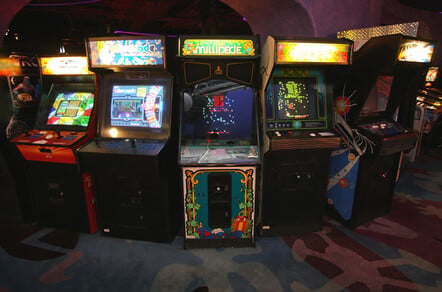New York, NY (Top40 Charts) Over the past few decades, it is easy to trace the development of the gaming industry. From simple arcade games with no clear plot and pixelated graphics, it has evolved to include complex projects and impressive mobile games. Although the main attraction of video games is still entertainment, everything else has evolved significantly, from the way we interact to their cultural impact. In this article, we will tell you the stories of the gaming industry, comparing the golden age of arcades and modern mobile games to determine what has changed and which genre is better.
Monetization: From Coins to Microtransactions
An arcade game model that was classic was simple and straight. One coin was required for every arcade play, where every game was always within the challenge of spending more. A player had also to insert another coin to continue if they lost all their lives during the game. In this way, the arcade owner derived income as well as rewarding skill and persistence.
With the advent of modern gaming, monetisation methods have changed significantly. In the latest mobile games, developers can generate revenue in several ways. While many games are free to download, they rely heavily on ad impressions, in-game purchases, and paid subscriptions. This adds up to a huge amount of revenue, which can reach millions of dollars for the most popular games. Also, some mobile games also include gambling-style mechanics, such as csgo coinflip, a betting system commonly found in online gaming communities. Thus, in the debate between these two models, mobile games win in terms of economics, but don't forget, they prioritise profit over player experience, so donating is not necessary.
The Evolution of Accessibility and Convenience
The most significant difference between classic arcades and modern mobile games is accessibility. In arcade gaming, players had to go to some gaming center and often pay per play. These machines, from the classic Pac-Man to Street Fighter II, were intended to give players short bursts of high-intensity gameplay in an effort to entice them to insert further coins to improve on their previous score.
Today, everyone knows about mobile games, and since almost everyone has a smartphone, they have played them at least once. You could say that they have eliminated almost all physical barriers and have become world famous due to their accessibility. They have even influenced cs2 case opening sites, which were initially available only on PCs, and now also on mobile devices. This change from arcade titles has made modern games more convenient because they can be played anywhere and anytime. In addition, mobile games offer dozens of different genres to suit every taste, ranging from fps to complex multiplayer battle arenas. Needless to say, mobile gaming is used to host multimillion-dollar eSports tournaments, which are highly valued in the gaming industry.
Game Design and Player Experience
We all know and love classic arcade games. Back in the day, they were created around intense gameplay that required sensitivity and emphasised skill. The most famous titles of their time were Galaga, Donkey Kong, and the first parts of Mortal Kombat. These titles were not only interesting, but also required excellent reaction skills, pattern recognition, and quick reflexes. Therefore, they were quite difficult to master, and some players lost interest while learning.
In contrast, most modern mobile games are quite simple. They prioritise accessibility and user engagement, including features such as hints, daily rewards, and social mechanics. They don't need to use complex algorithms to dynamically adjust the difficulty level, ensuring that players stay hooked without getting too frustrated. While this approach has made games more inclusive, some argue that it has reduced the sense of achievement and skill progression that played a significant role in classic arcades.
More recently, a movement from gut gameplay to participatory mechanisms has taken place, redefining success metrics. Consider high scores in arcades, which were pretty much reflective of any player's dedication and mastery in the game. Nowadays, advancement is hugely premised on time-gated upgrades or in-app purchases in mobile games with contrived spikes in difficulty aimed at encouraging spending. It has also completely changed how motivation is defined for players-from that self-improvement and leaderboard domination by arcade gamers to much more spendy retention strategies maximizing playtime and revenue for most modern gamers.
Social and Competitive Aspects
Arcade games were inherently social spaces. Players gathered in computer clubs or at home to have fun with friends and play their favourite games. They did not think about the social aspects, because such time spent playing games is already social. These personal interactions fostered a unique gaming culture built around community and competition.
Over time, games began to evolve, creating new titles and ways of interaction. The first tournaments made a great contribution to this. Gaming events brought together dozens and hundreds of people who were united by one goal, and these events always brought a lot of emotions, and players could get rewards for their work.
Mobile gaming may boast some socializing features but increasingly becomes administered entirely over the Internet and not in familiar senses. Leaderboards, in-game chats, multiplayer modes connecting players from around the world have become part of gaming these days. Intense interactions among players can now be organized by games like Clash Royale and Call of Duty Mobile but fail to bring that earlier-feel physical co-existence and camaraderie available in traditional arcades. Well, social media and live streaming platforms build up others avenues that offer connections among gamers.
Conclusion
Putting the facts together, it is easy to trace the development of the gaming industry from arcade to mobile games. Although both genres have a common goal - to entertain players - their essence and features are different. Arcade games can be called classics and are built around social competition, gameplay, and an achievement system. Mobile games, on the contrary, are built around accessibility, so that every player, even beginners, can easily play them.
Despite all the differences, both arcades and mobile games have a great impact on the audience and cultural significance. One thing is for sure: games will continue to evolve, adapting to new technologies and player expectations, while maintaining the excitement that has made them a favourite form of entertainment for generations.























